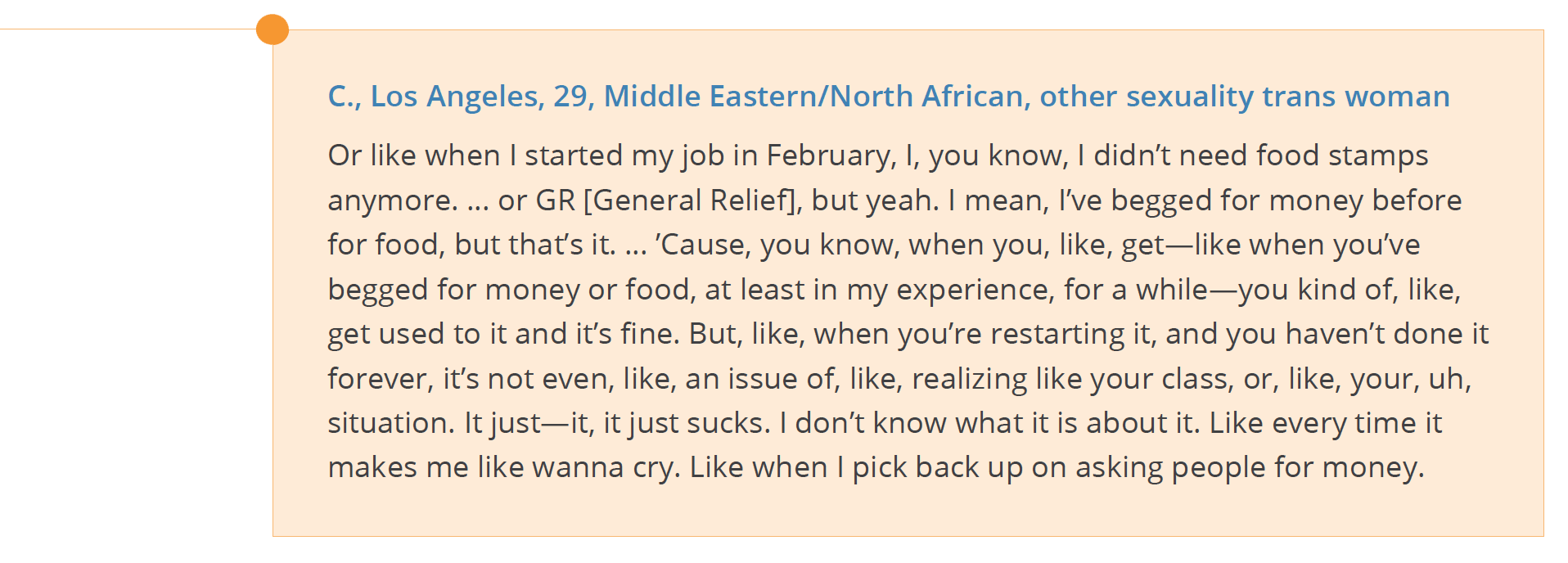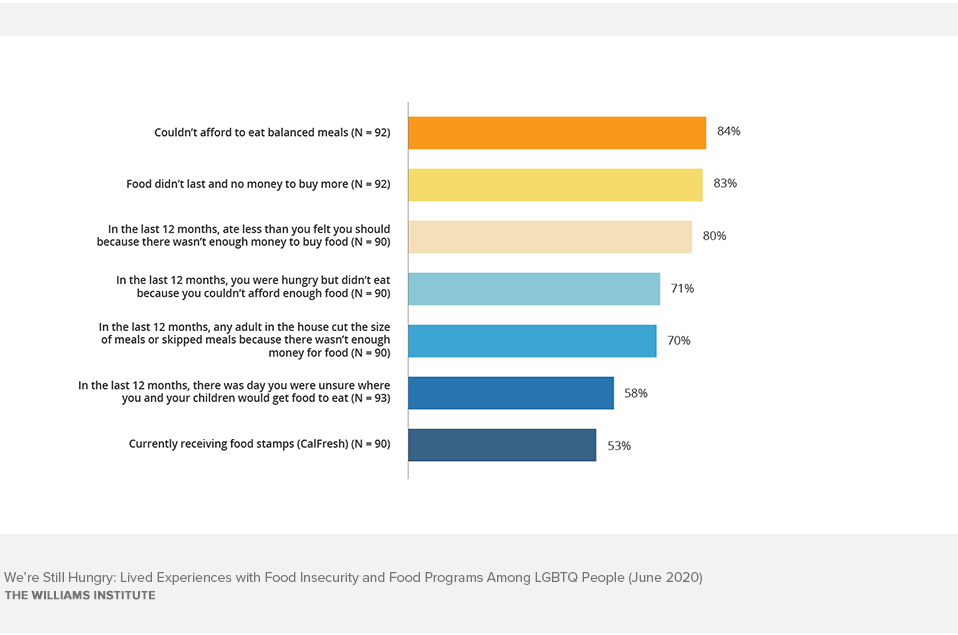Executive Summary
Millions of adults struggle with hunger in California. Sexual orientation and gender identity, like race and ethnicity, are important social statuses relevant to understanding patterns of hunger and food insecurity. Despite a lack of federal data on food insecurity and SNAP participation of lesbian, gay, bisexual, transgender, and queer (LGBTQ) individuals and households, research demonstrates that LGBT people in the United States report high rates of food insecurity. What is less known is what that actually looks like for LGBTQ people. In the interest of informing public policies and social services, this study was designed to document how LGBTQ people manage food insecurity and the role of sexual orientation and gender identity in those experiences.
In the context of the larger Pathways Project (www.pathways-study.org), this current study sought to answer the following research questions to inform ongoing work on food insecurity:
- What are the food insecurity experiences of LGBTQ people?
- What challenges do LGBTQ people face when accessing and using programs designed to alleviate food insecurity, particularly food banks and food stamps?
- How do experiences with food banks and other aspects of food insecurity among LGBTQ people differ across key demographic groups, particularly older adults and those living in nonurban areas?
To answer these questions, we used data obtained from in-depth interviews and questionnaires from 93 LGBTQ people in Los Angeles County and Kern County and 35 follow-up questionnaires from some of the respondents.
Analysis of the interview and questionnaire data revealed multiple themes across this sample of low-income LGBTQ people in terms of how they manage food insecurity. We focused our analyses for this initial report on their experiences with food banks and other charitable food services, as well as food stamps.
- Many participants discussed feeling hunger and most reported not having enough food to eat.
- To find food, respondents used various strategies: Finding food that’s been thrown away by others, asking people for food on the street, identifying events with free food, or getting help from friends and family;
- Applying for food stamps/SNAP;
- Getting groceries or cooked food from charitable food services.
- Most (65%) participants had received food at a food bank, food pantry, or other charitable food services (e.g., free meals offered at churches or secular programs).
- Respondents with children were more likely to discuss using food bank-related services.
- A lack of transportation and housing (with a kitchen and places to store food) were key barriers to being able to use charitable food services among participants.
- Older adults (50 years or older) in the study were particularly concerned with the quality of food available from these services and the dynamics among clients in the programs.
- Respondents from Kern County, the area representing a rural or nonurban experience in California in the study, were limited to mostly religious-affiliated charitable food services.
- Several participants in both counties discussed concerns about potential LGBTQ-related rejection from these religiously-affiliated services.
The themes we identified demonstrate that access to food programs is not simply about whether people can find the services or get the benefits. The concept of access was inextricably tied to the means to get to the services, the emotional toll taken by using the programs, whether they had housing adequate for storing and cooking food, and comfort with the program environment. Fear that food program staff would not be accepting of LGBTQ people affected both choices and options for where participants could go for help and the emotional experience of going to places that participants expected or knew would reject them.
Download the full report



